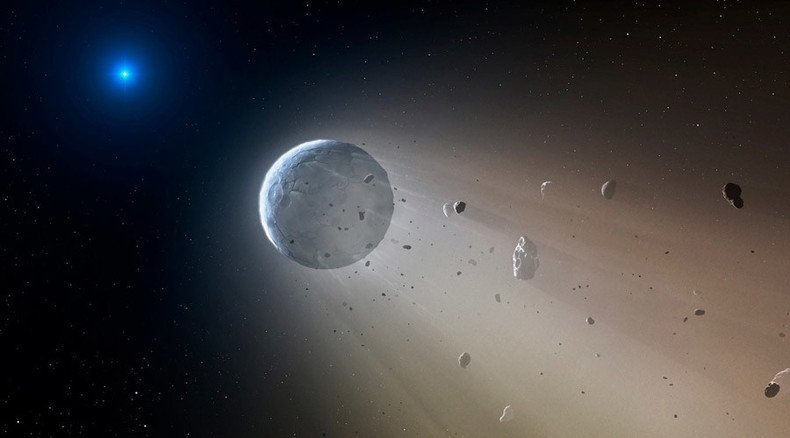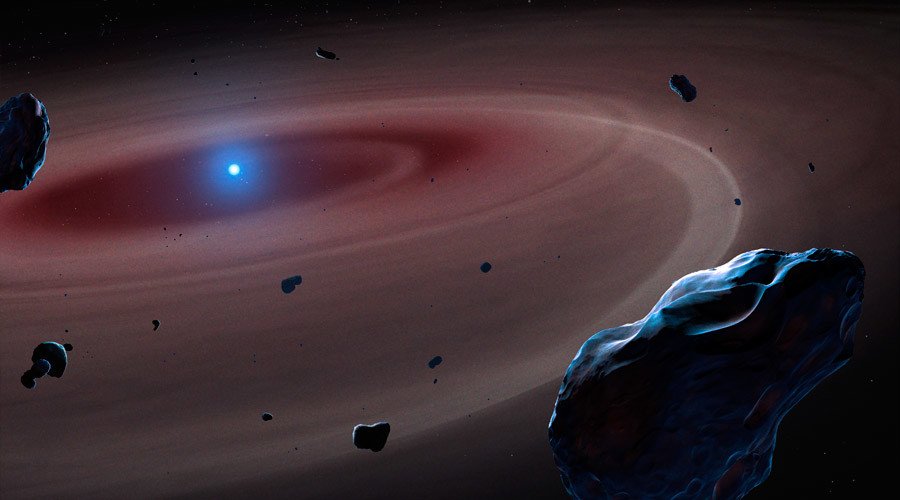'Like a crime happening in front of me': Astronomer who saw how Earth could die shares experience

A key theory proposing that a burnt-out sun sucks in and destroys its own planets has been proven by NASA’s Kepler telescope. The man who led the observation team, Andrew Vanderburg, explains what it means for us.
“Sometimes you get to see a crime scene, when you walk in and see things that might have happened, but this time we see it as it is happening,” Vanderburg, of the Harvard-Smithsonian Center for Astrophysics (CfA) told RT.
Vaporized & ripped apart: Astronomers reveal how #Earth will die https://t.co/vF2n44119I#spacepic.twitter.com/SkjK7dsbTL
— RT (@RT_com) October 23, 2015WD 1145+017, located 570 light years away from Earth in the constellation Virgo, is a typical white dwarf. This kind of star develops when a sun like ours uses up all its nuclear fuel, blows up into a red giant, and then shrinks to a dense core the size of Earth, while still retaining its mass.
Using the partly-damaged but still functional and recently repurposed Kepler telescope, CfA scientists were able to detect that the light emitted from the dying star dimmed every 4.5 to 5 hours due to heavy materials such as silicon and iron blocking it.

“For a long time astronomers had noticed that white dwarves had shown heavy elements in their atmosphere. If they are from the star itself, it means that they should have been drawn inwards by gravity, and should not be visible, so that we see them means that they have been deposited there recently,” says Vanderburg.
The pattern of dimming was impenetrable at first, but Vanderburg says that, on the last day of observation in August of last year, his team finally realized what they were seeing – a big rocky object the size of the dwarf planet Ceres in our solar system and a trail of dust that had been part of the planet being torn apart and flung into the star.
For the first time ever, humanity has witnessed all three objects in the same system – a white giant, planet remnants, and its space debris.
“We have caught a white dwarf in the act of destroying its planet and sprinkling its remnants onto the surface of the star,” sums Vanderburgh.
How did this happen? As the sun turned into a red giant, it destabilized the orbits of the planets circling around it. If they were sufficiently far away, they likely drifted into outer space, becoming cold lifeless rocks, but the planets closer to the sun were now being pulled in and ripped apart by the extraordinary gravity of the heavy white dwarf.
Dying stars’ exodus: Hubble captures 1st ever images of migrating white dwarfs http://t.co/iWqfn1HV7lpic.twitter.com/zh4qRamDfu
— RT (@RT_com) May 16, 2015By cosmic measures, this is a fast process – Vandeburg says that in a million years the planet will be destroyed in its entirety and no evidence will remain.
And in a pessimistic 5 or optimistic 7 billion years, this could be the exact the way Earth ceases to exist, though it could meet a fiery death far earlier.
“There are more pressing matters we should worry about. Even if the Earth is not engulfed by the Sun becoming a red giant, the Earth will not be a good place to be anymore, it will be absolutely scorched by the intense heat of the star,” says the scientist, whose discoveries were published in Nature this week.
There is only one solution.
“We should move on long before that happens.”












